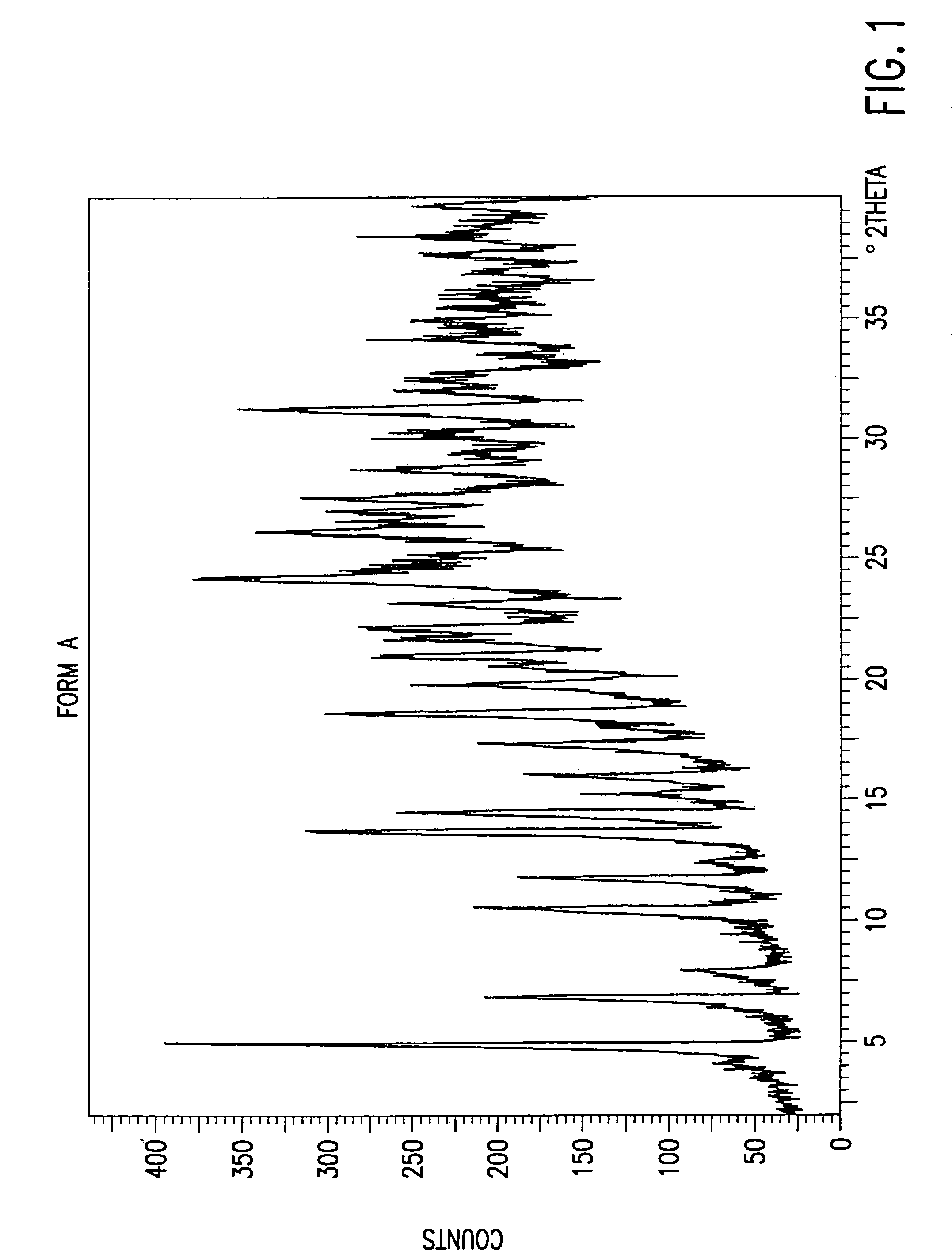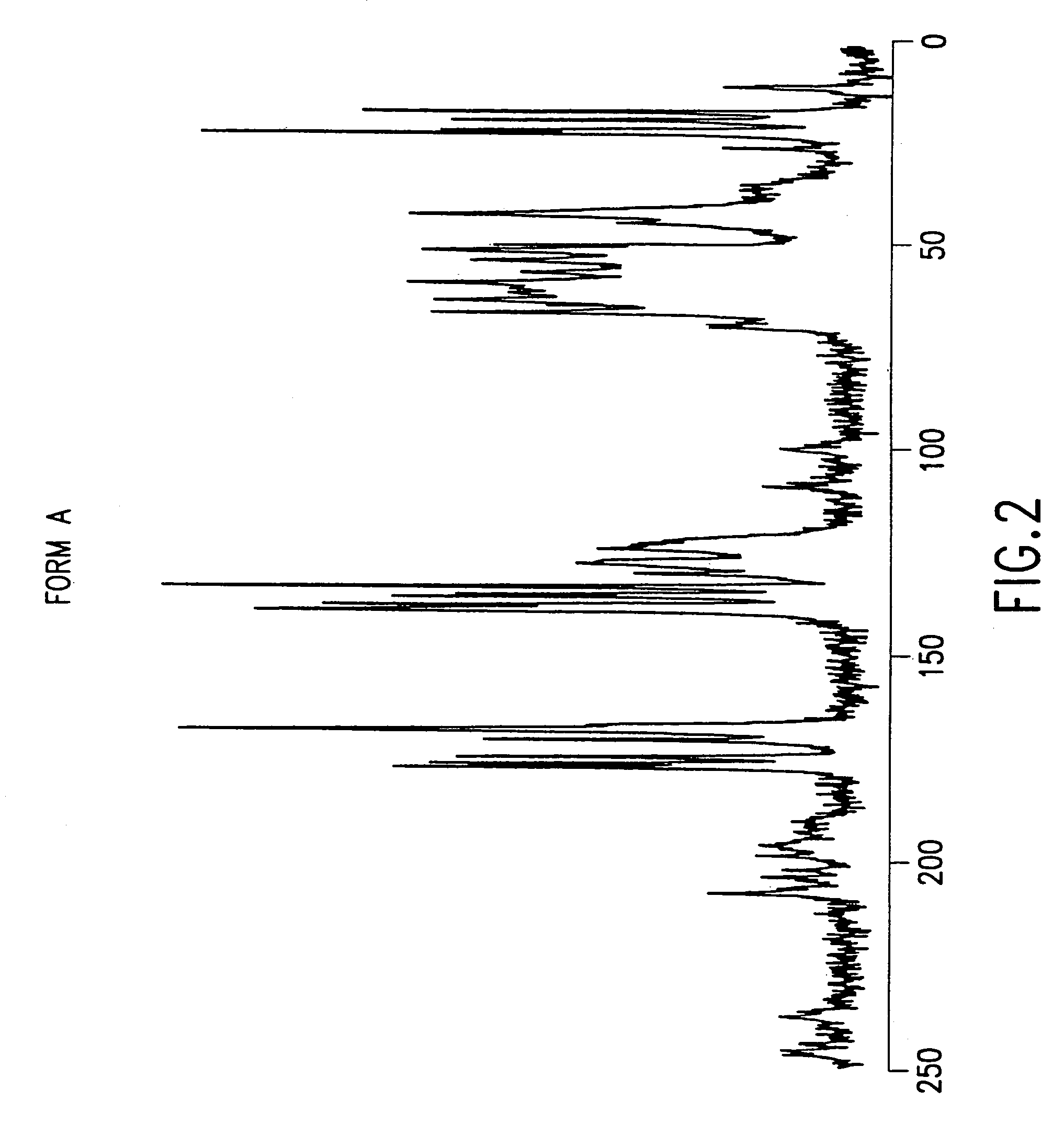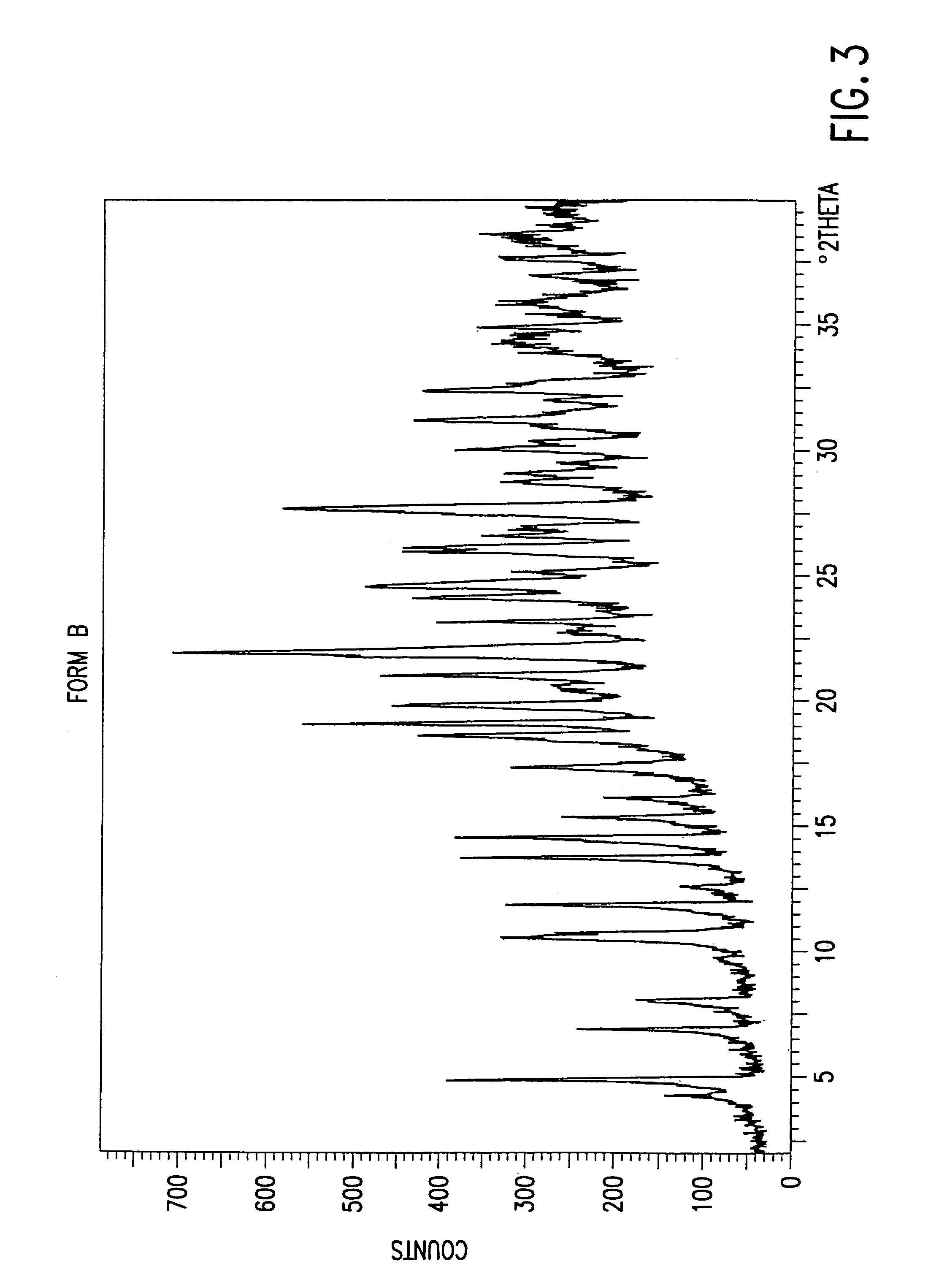Process for making carbapenem compounds
a carbapenem and compound technology, applied in the field of antibiotic compounds, can solve the problems of significant degradation of thermally unstable compounds, difficult removal of organic solvents used in the crystallization of carbapenem compounds from the final product, and inability to remove organic solvents that are used in the crystallization of carbapenem compounds, etc., to achieve the effect of minimizing degradation and reducing the level of residual organic solvents
- Summary
- Abstract
- Description
- Claims
- Application Information
AI Technical Summary
Benefits of technology
Problems solved by technology
Method used
Image
Examples
example 1
[0081]A hydrogenator is charged with 63 g of 5% Pd on carbon catalyst (dry weight) in 1.8 L of water. The vessel is placed under hydrogen then vented and placed under nitrogen. Sodium hydroxide (68 g, 50 wt %) is charged adjusting the pH to about 7.5 with carbon dioxide.
[0082]The enol phosphate (170 g) and the thiol (86 g) are dissolved in 1.3 L of N-ethylpyrrolidinone (NEP). The mixture is cooled to below −40° C. and 1,1,3,3-tetramethylguanidine (109 g) is added. After 3 hours, the reaction mixture is quenched into the hydrogenator at below 15° C. adjusting the pH to about 8 with carbon dioxide. The vessel is placed under hydrogen. When the reaction is complete, the hydrogen is vented and the reaction mixture is treated with activated carbon and filtered. The filtrate is extracted with iso-amyl alcohol containing diphenylphosphoric acid (240 g) and 50 wt % NaOH (44 g). The resulting aqueous solution is further extracted with iso-amyl alcohol to give an aqueous solution containing a...
example 2
[0086]4R, 5S, 6S, 8R, 2′S, 4′S)-3-[[2-[[3-carboxyphenyl)amino]carbonyl]pyrrolidin-4-yl]thio]-4-methyl-6-(1-hydroxyethyl)-7-oxo-1-azabicyclo[3.2.0]hept-2-en-2-carboxylic acid sodium salt Form B (31.6 g containing 22% 2-propanol, 20.1 assay g) was slurried in 50 mL of methyl acetate containing 4% (w / v) water at 4° C. for 0.5 h. The solvent was drained to bed height and the cake was slurried in 50 mL of methyl acetate containing 4% (w / v) water at 4° C. for 1.5 h. The solid was then washed with 3×50 mL of methyl acetate containing 4% (w / v) water. Dry nitrogen was passed through the solid using vacuum to maintain a flow of 200–500 mL / min (0.6–1.5 SLPH / assay gram of the compound). The solids were stirred intermittently. After about 3 h, the level of methyl acetate had been reduced to less than 1% and 2-propanol was undetected (<0.05%). Less than 0.2 area % loss in purity was observed by HPLC analysis.
example 3
[0087]4R, 5S, 6S, 8R, 2′S, 4′S)-3-[[2-[[3-carboxyphenyl)amino]carbonyl]pyrrolidin-4-yl]thio]-4-methyl-6-(1-hydroxyethyl)-7-oxo-1-azabicyclo[3.2.0]hept-2-en-2-carboxylic acid sodium salt Form A obtained by crystallization of 6.8 g of the monosodium salt from a mixture of water, methanol, and 1-propanol (1:1.25:1.25 v / v / v) was washed with 4×50 mL of acetone containing 5% (w / v) water at 9° C. Humidity-controlled nitrogen (dew point <0° C.) was then passed through the solid reducing the level of acetone to less than 0.5%. Methanol and 1-propanol were undetected (<0.05%). The water content of samples taken during the operation was 15 to 19%. Less than 0.3 area % loss in purity was observed by HPLC analysis.
PUM
 Login to View More
Login to View More Abstract
Description
Claims
Application Information
 Login to View More
Login to View More - R&D
- Intellectual Property
- Life Sciences
- Materials
- Tech Scout
- Unparalleled Data Quality
- Higher Quality Content
- 60% Fewer Hallucinations
Browse by: Latest US Patents, China's latest patents, Technical Efficacy Thesaurus, Application Domain, Technology Topic, Popular Technical Reports.
© 2025 PatSnap. All rights reserved.Legal|Privacy policy|Modern Slavery Act Transparency Statement|Sitemap|About US| Contact US: help@patsnap.com



